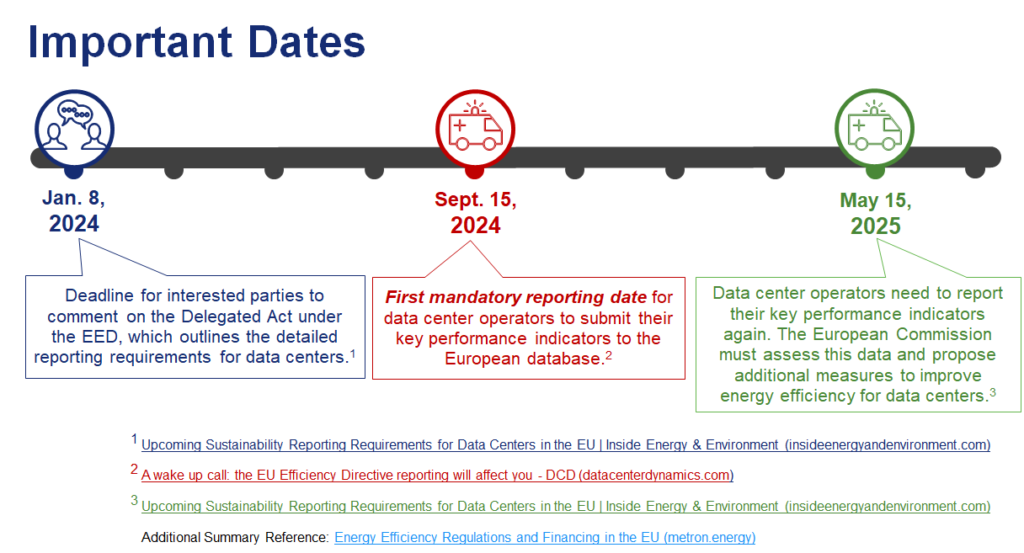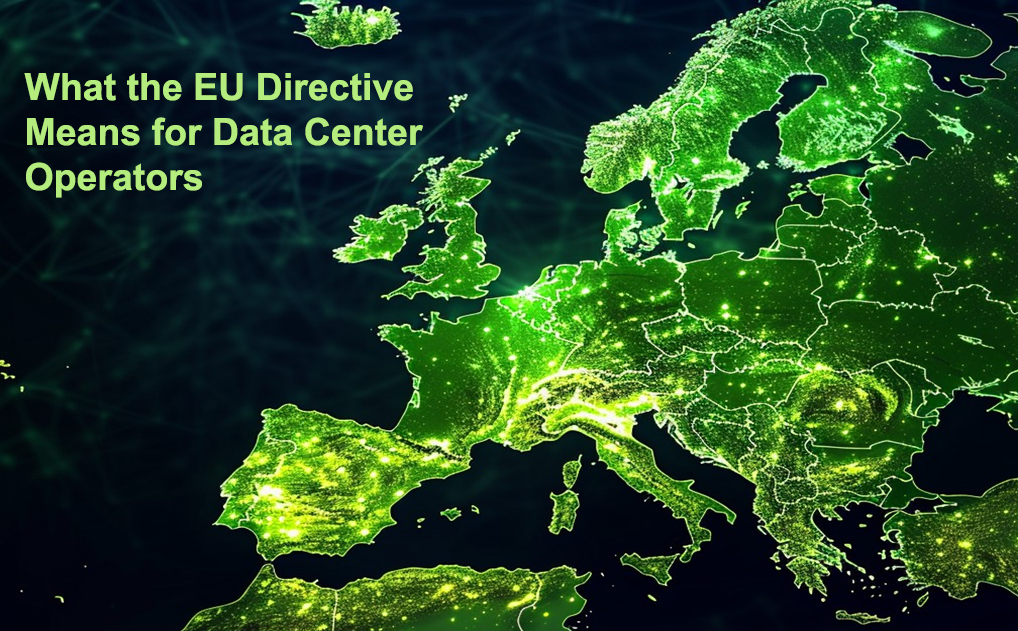The European Union’s commitment to sustainable energy practices has led to the implementation of several regulatory measures, with the Energy Efficiency Directive (EED) being a cornerstone in this endeavor. Introduced in 2012 and subsequently revised, the directive represents a robust framework that significantly reduces energy consumption across the EU. The recent amendments, particularly those affecting data centers, are set to reshape how energy efficiency is perceived and implemented in one of the most power-intensive sectors of the digital economy.
Historical Context and Evolution of the Energy Efficiency Directive
The original 2012 directive responded to increasing energy dependency and environmental sustainability concerns. It established a target of reducing the EU’s energy consumption by 20% by 2020 compared to 2007. This target was not only ambitious but also a necessary step towards mitigating the impacts of climate change and reducing the EU’s extensive reliance on imported energy resources.
In 2018, as part of the “Clean Energy for All Europeans” package, the directive was revised to increase the energy reduction target to 32.5% by 2030. This revision emphasized the principle of “energy efficiency first” or the importance of energy efficiency, advocating that energy efficiency should be a crucial factor in developing new energy supply rules and other related policy areas.
The 2023 revision of the EED, embedded within the broader objectives of the Fit for 55 package and the REPowerEU plan, marked a significant tightening of these targets. The directive sets forth a goal to reduce energy consumption by 11.7% by 2030 relative to a 2020 baseline—a nearly three percentage point increase over the previous targets. This update was mainly influenced by the geopolitical climate, specifically the need to reduce dependency on Russian fossil fuels, and aims to strengthen the EU’s resilience against energy supply disruptions.
Directive (EU) 2023/1791: A Closer Look
The recast Energy Efficiency Directive (Directive (EU) 2023/1791), adopted on 13 September 2023, is an integral part of the EU’s strategy to meet its new energy and climate goals. The directive raises the bar for energy efficiency and integrates measures that ensure these heightened goals are within reach by 2030.

Here’s what this means specifically for data centers:
Enhanced Efficiency Metrics
The directive introduces stringent reporting requirements for data centers, focusing on a comprehensive set of metrics. Operators must now report on traditional metrics such as Power Usage Effectiveness (PUE), Water Usage Effectiveness (WUE), and Carbon Usage Effectiveness (CUE). Additionally, new requirements are to track the use of renewable energy, the efficiency of energy reuse systems (such as the conversion of waste heat into usable energy), the effectiveness of cooling systems, and the efficiency of IT equipment.
Renewable Energy Adoption and Energy Reuse
The directive focuses on promoting renewable energy sources and innovative energy reuse. For data centers, this could mean integrating solar or wind power into their energy mix and deploying systems that can convert waste heat from servers into heating for nearby residential or commercial buildings.
Applicability Beyond EU-Based Companies
A crucial aspect of the directive is its applicability to data centers operated by non-EU-based companies in the EU. This inclusion ensures that all data centers in the EU, regardless of the origin of their operators, adhere to the same high energy efficiency standards, promoting a fair and competitive market environment.
Practical Implications for Data Center Operators
Complying with the new directive requires a strategic overhaul of existing data center operations. Operators must assess their current energy use and infrastructure capabilities to identify areas where efficiency can be enhanced. Investments may be necessary, particularly in older facilities, to upgrade cooling systems, optimize server utilization, and integrate renewable energy sources.
Technological Innovations
The directive’s stringent targets will likely drive innovation in data center technology. Cooling technologies, in particular, offer substantial potential for efficiency improvements. Advanced cooling solutions, including liquid immersion and direct-to-chip cooling, can significantly reduce the energy required to maintain optimal temperatures for data center equipment.
Strategic Partnerships
Data center operators might find partnering with energy providers, technology firms, and local communities advantageous in meeting their renewable energy and energy reuse goals. Such collaborations can develop localized energy grids and heat recovery systems that benefit all parties.
Looking Ahead: The Role of Data Centers in Europe’s Energy Future
Data centers will undoubtedly play a critical role as the EU transitions towards a more sustainable and energy-efficient future. By adhering to the directive’s requirements, data centers contribute to the broader energy efficiency and sustainability goals and position themselves as leaders in the technological shift towards a greener economy.
The compliance journey may be complex and demanding, but it is also an opportunity for data center operators to innovate and improve.
Additional Resources
- European Commission’s reporting requirements for data centers: European Commission
- Information on the REPowerEU plan: REPowerEU
- Analysis of energy efficiency regulations and financing: Metron Energy
- Upcoming sustainability reporting requirements: Inside Energy & Environment
- Impacts of the EU Efficiency Directive on data centers: Datacenter Dynamics
- Fundamental Measures of Data Center Sustainability eBook | Nlyte
- Data Center Sustainability Compliance Reporting | Nlyte
- Reducing Data Centers’ Carbon Footprint: Strategies and Tools for Sustainability
- Integrating Building Automation System and Data Center Infrastructure Management System for Sustainable Data Centers
- The Dawn of Sustainable Data Centers in the EU: A Closer Look at the New Rating Scheme | Nlyte



